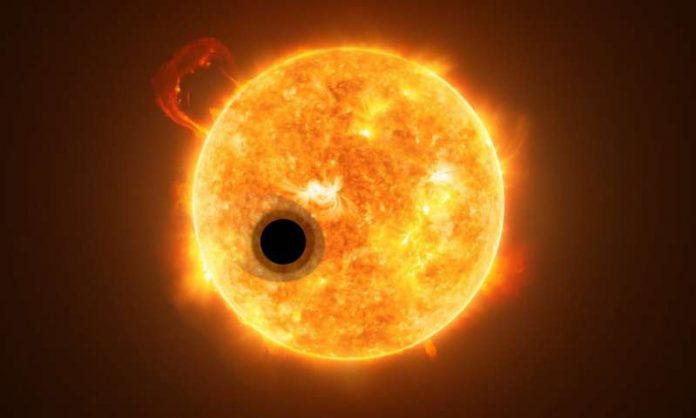Using Hubble Space Telescope, scientists have found an abundance of helium in the upper atmosphere of WASP-107b, which was only discovered in 2017.
Scientists led by Jessica Spake from the University of Exeter have detected an entire planet where inhabitants would have absurdly high voices thanks to all the helium in the atmosphere. The planet in question, WASP-107b, is a “super-Neptune” located about 200 lightyears away inside the Virgo constellation – it’s about the size of Jupiter, but it’s very low density and has only 12 percent of Jupiter’s mass.
Perhaps connected to its low density is its enormous atmosphere, which seems to extend tens of thousands of miles/kilometers into space. It’s because of this enormous atmosphere that the research team managed to get a huge helium signal using data taken by the Hubble Space Telescope.
They specifically worked out a helium signal by analyzing the spectrum of light coming out from WASP-107b’s atmosphere, moving away from examinations of ultraviolet light (which are typically used when looking at exoplanets) and instead used a new technique involving infrared light.
Once the James Webb Space Telescope is finally up in orbit, it could provide a lot more valuable information than just Hubble, although it’s been facing a lot of delays during its construction. According to Spake, who said the following in a press release from the University of Exeter:
Opening quote
“We hope to use this technique with the upcoming James Webb Space Telescope, for example, to learn what kind of planets have large envelopes of hydrogen and helium, and how long planets can hold on to their atmospheres. By measuring infrared light, we can see further out into space than if we were using ultraviolet light.”
Closing quote
And this planet shouldn’t be confused with WASP-104b, another exoplanet that was recently in the news for absorbing nearly 99 percent of all visible light and thus appearing pitch black.
As we keep finding new exoplanets in distant solar systems, we should really start giving them more creative names.















